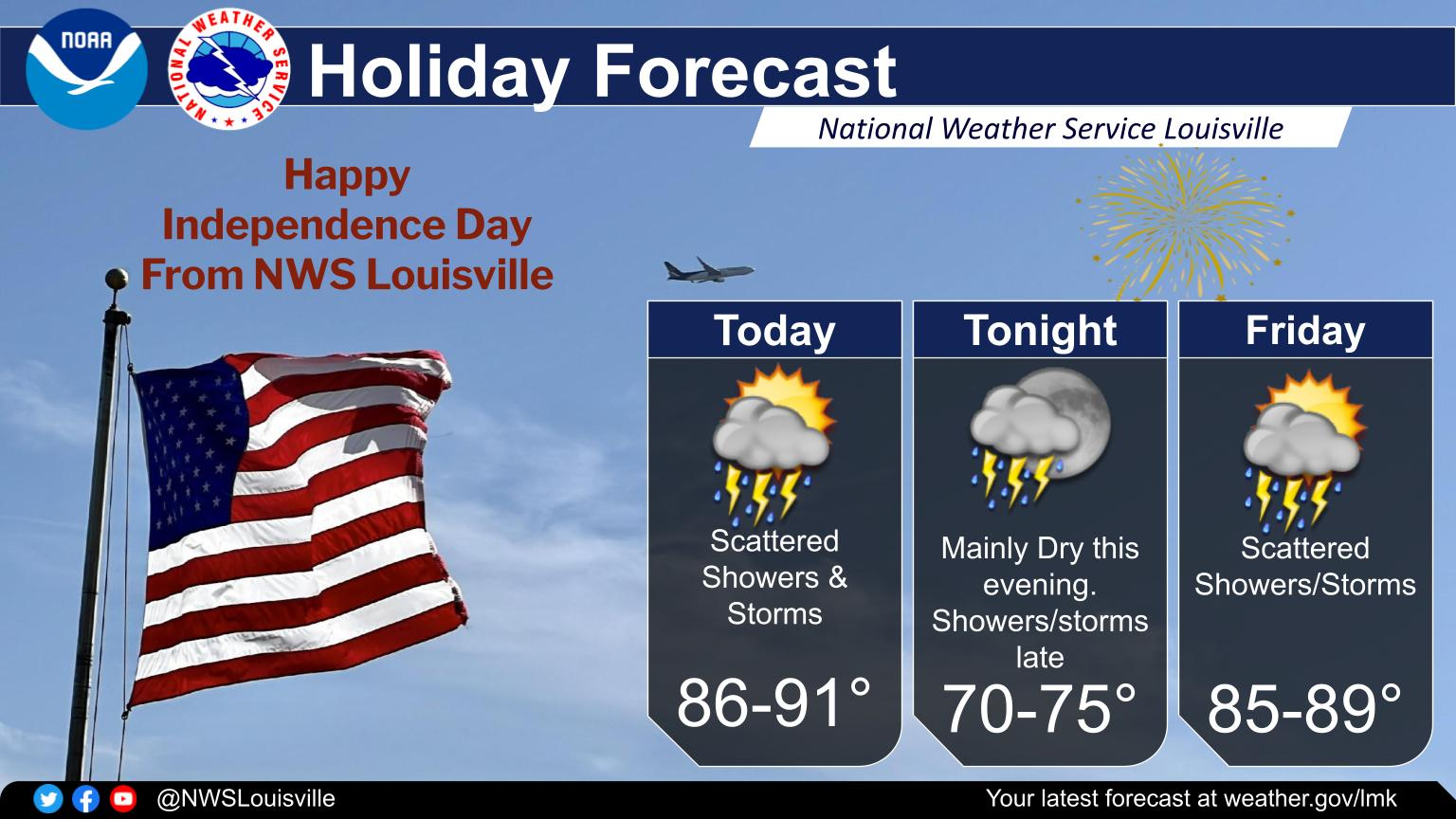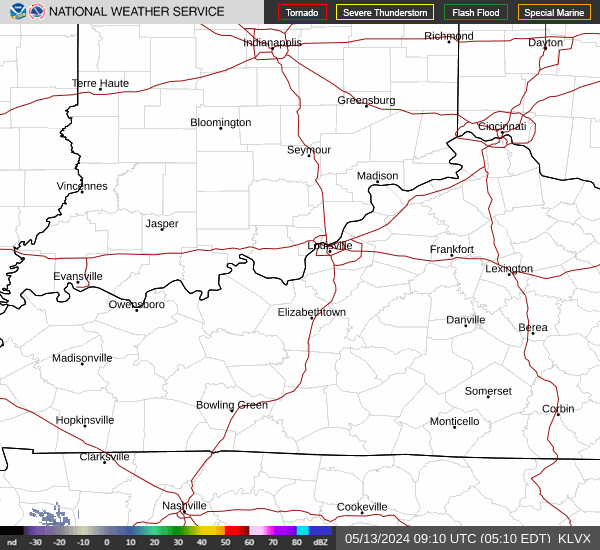Louisville, KY
Weather Forecast Office
Since becoming operational back in December of 2017, our webpage now is displaying lots of new information from the Geostationary Operational Environmental Satellite (GOES). You can access these data either directly from this link, https://www.star.nesdis.noaa.gov/GOES/GOES16_CONUS.php, or you can navigate to it from our webpage. For the latter, simply click on your location on the map on our home page. That will take you to your 7-day forecast, as in the image below.
If you scroll down on that page a little, you will come to additional ways to view the forecast, but also choices to see the latest radar and satellite imagery, as in the picture below on the center on the right side of the picture.
If you click on the satellite image, it will take you to that link to access the data...shown below.
Choosing one of the GeoColor options will give you an image like this one:

This imagery merges several sources. Bands one, two, and three (options on the previous page) all give a different perspective of the visible light spectrum. Merging that information together can give a true color image of what the Earth looks like from space. This GOES is the first satellite since 1967 to have the ability to image in color! Another neat feature in the image above is the transfer to nighttime imagery. Night lights from cities are merged into the data, so once again you can have an impression for what the Earth would look like at night.
If you want a closer up look at our region, go to the top of the previous page and search for regional views, then click on the Great Lakes...
Choose the band you are interested in looking at from there. The image below is the GeoColor version.
Enjoy this great new treasure trove of data. Meteorologists are learning a lot about how the atmosphere works in small scales with this upgraded satellite!
Current Hazards
Hazardous Weather Outlook
Storm Prediction Center
Submit a Storm Report
Advisory/Warning Criteria
Radar
Fort Knox
Evansville
Fort Campbell
Nashville
Jackson
Wilmington
Latest Forecasts
El Nino and La Nina
Climate Prediction
Central U.S. Weather Stories
1-Stop Winter Forecast
Aviation
Spot Request
Air Quality
Fire Weather
Recreation Forecasts
1-Stop Drought
Event Ready
1-Stop Severe Forecast
Past Weather
Climate Graphs
1-Stop Climate
CoCoRaHS
Local Climate Pages
Tornado History
Past Derby/Oaks/Thunder Weather
Football Weather
Local Information
About the NWS
Forecast Discussion
Items of Interest
Spotter Training
Regional Weather Map
Decision Support Page
Text Products
Science and Technology
Outreach
LMK Warning Area
About Our Office
Station History
Hazardous Weather Outlook
Local Climate Page
Tornado Machine Plans
Weather Enterprise Resources
US Dept of Commerce
National Oceanic and Atmospheric Administration
National Weather Service
Louisville, KY
6201 Theiler Lane
Louisville, KY 40229-1476
502-969-8842
Comments? Questions? Please Contact Us.







 Weather Story
Weather Story Weather Map
Weather Map Local Radar
Local Radar